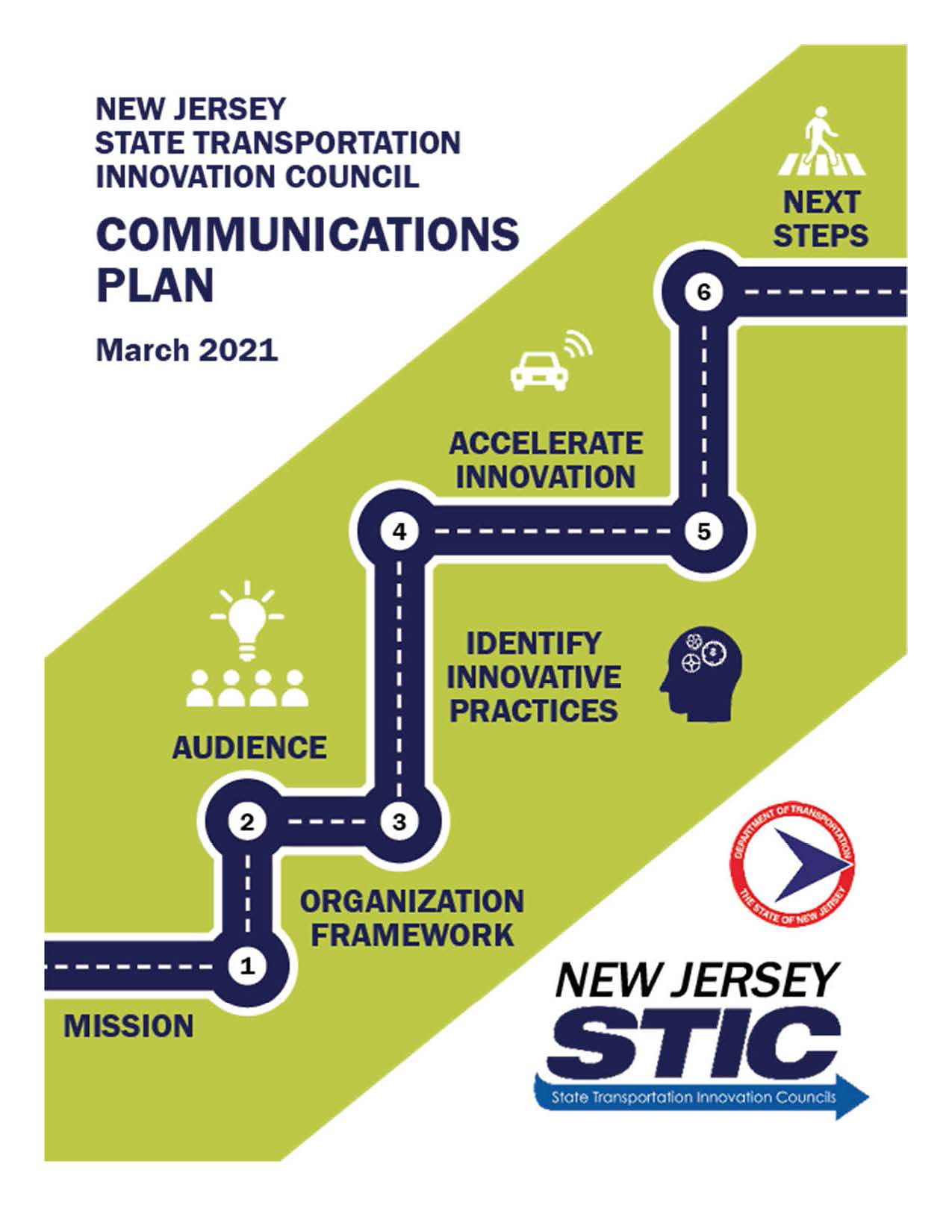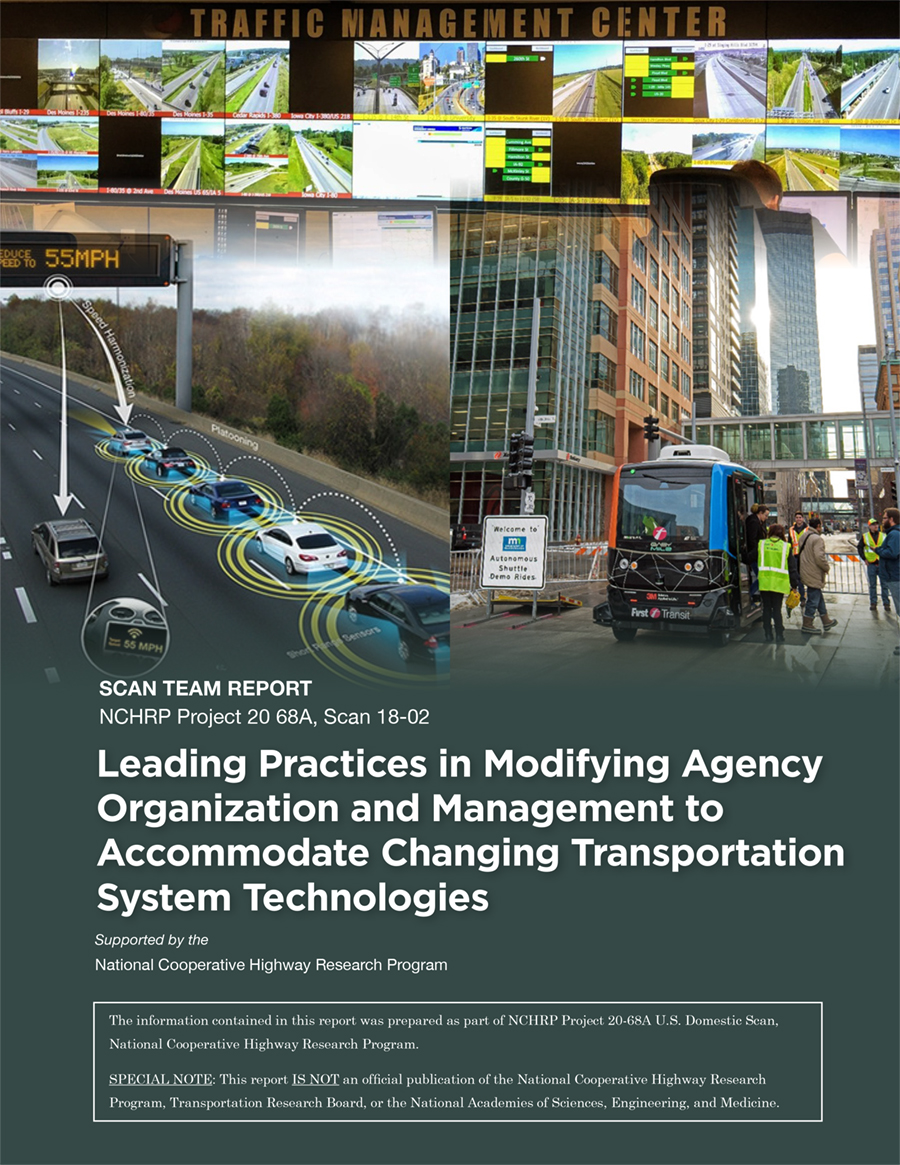
Leaning Into Innovation
The national State Transportation Innovation Council (STIC) meeting held in June highlighted New Jersey’s success at accelerating innovation through communication and collaboration, and it featured the results of a U.S. Domestic Scan Program study on how agencies are organizing to adapt to evolving technologies.
Amy Lucero, Associate Administrator for FHWA’s Office of Transportation Workforce Development and Technology Deployment, told participants during the meeting’s webcast to keep sharing ideas, keep trying new things, and keep encouraging staff to think outside of the box.
“This is how we become better and how our transportation system becomes better,” said Lucero. “The STIC Network is a great way to stay engaged and to learn from each other, and I think we’ve seen tremendous benefit from that over the last 10 to 12 years.”
New Jersey STIC Communications Plan
Brandee Chapman, Innovation Coordinator for the New Jersey Department of Transportation (NJDOT), described three efforts—the New Jersey STIC Communications Plan, an innovation deployment workshop, and the agency’s drone program—that have helped further the agency’s culture of innovation and improve the way they do business.

The New Jersey STIC Communications Plan includes a variety of tools and practices for encouraging idea exchange and promoting innovation among the State’s transportation community.
Credit: New Jersey Department of TransportationThe New Jersey STIC Communications Plan was developed as a guide to encourage the exchange of ideas and promote innovation among STIC members and the broader New Jersey transportation community.
“The most effective communication methods will vary based on audience, which is where this plan comes in,” said Chapman. “It identifies a range of communication tools that raise awareness of the STIC and Every Day Counts program, highlight success stories and challenges relating to implementing innovations, and convey the progress that New Jersey is making on all of those fronts.”
Chapman said some of the most successful tools are their highly attended tech talks and webinars, which cover current practices and emerging issues in transportation.
Accelerating Innovation through Teamwork
NJDOT piloted a “Let’s Go: Accelerating Innovation through Teamwork” workshop aimed at guiding a team in the creation of an action plan to accelerate innovation deployment. The participants focused on succession planning and three-dimensional (3D) project delivery, which aligns with EDC e-Ticketing and digital as-builts.
The workshop resulted in NJDOT’s succession planning team exploring the reestablishment of a department-wide mentoring program, and it also helped the agency’s 3D delivery team focus its vision and begin planning a pilot.
“We found that the Let’s Go workshop was a great way to bring different people together to solve a problem and advance innovation in a structured, purpose-driven way,” Chapman said.
Unmanned Aerial System Program
NJDOT’s drone, or unmanned aerial system (UAS), program began in 2016 and currently includes a fleet of seven drones and 11 pilots with more in training. “STIC Incentive grants provided equipment, procedures, training, and software and allowed for a peer exchange,” said Chapman. “Brainstorming with other States through this peer exchange was key to expanding the drone program.”
From inspecting bridges and high mast light poles, to monitoring the progress of beach replenishment, to real-time construction project monitoring and traffic congestion assessments, UAS use is now a standard practice at NJDOT.
“Thanks to the support from the STIC, the drone program helped further our culture of innovation by enabling us to work better, faster, and smarter to get projects and tasks done more efficiently,” Chapman said. “Our drone program is expanding every year, and we’re always exploring new ways to incorporate this technology in day-to-day operations.”

The final report from U.S. Domestic Scan 18-02 reveals how agencies are organizing to adapt to evolving technologies.
Credit: NCHRP Project 20-68 - U.S. Domestic Scan ProgramAdapting for Emerging Technologies
Bill Lambert, Bureau of Traffic Administrator at New Hampshire DOT, shared the findings of U.S. Domestic Scan 18-02, which investigated how DOTs are changing their organizational structure, institutional arrangements, and management practices to improve transportation system performance through the adoption of new technologies.
The scan team studied various aspects of several State DOTs. Among the findings was that the leadership and cultural traits of highly successful organizations include giving staff permission to make mistakes and encouraging and allowing risk taking.
The study also noted that required skillsets at transportation agencies are evolving. Among its workforce recommendations were to develop technology-driven job titles, which may differ from an agency’s traditional engineering job titles, as well as to keep some of the more interesting projects in-house as a strategy for attracting and retaining employees.
“It’s also critical to have staff development so that you have some internal expertise and are not outsourcing everything you need, recognizing that outsourcing some work may be necessary,” said Lambert.
Lambert said the scan team found that technology changes now and in the future are going to drive organizational change, and organizations need to be fluid and flexible so they can adapt to those evolving changes. “We don’t necessarily know what the new technologies will be a year from now or 5 or 10 years from now,” he said, “but we do know that we need to be able to be flexible and adopt those technologies.”
—MORE INFORMATION
Listen to a recording of the June 2022 national STIC Meeting.
Contact Sara Lowry of the Federal Highway Administration for more information on the STIC Incentive program.
Notice: The U.S. Government does not endorse products or manufacturers. Trademarks or manufacturers’ names appear in this article only because they are considered essential to the objective of the document.
Recommended Citation: U.S. Department of Transportation, Federal Highway Administration - Washington, DC (2022) Innovator Newsletter, September/October 2022, Volume 16 (92). https://doi.org/10.21949/1521850



